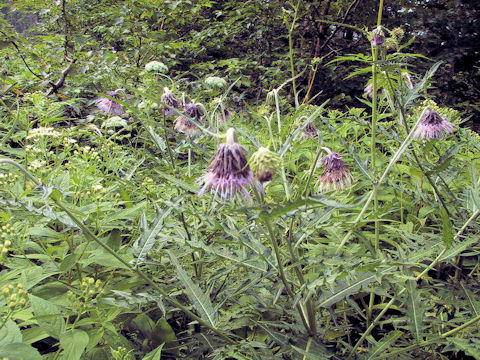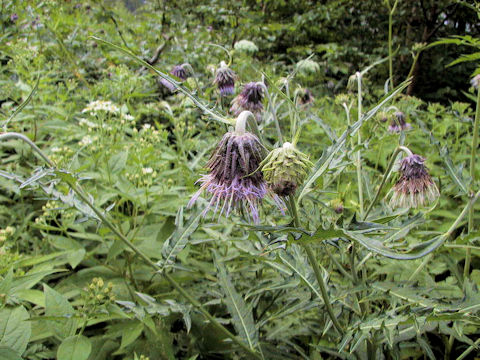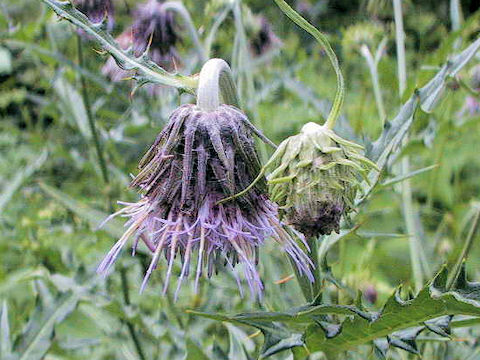
|
The "Kiso-azami" (Cirsium babanum var. fauriei) belongs to Asteraceae (the Aster family). It is a perennial herb that is distributed the Central Alps and Mt. Ontake, Mt. Norikura, and the central and southern part of the Northern Alps in Honshu of Japan. This herb grows on open grasslands and forest edges from the subalpine zone to the alpine zone, and can reach a height of 50-100 cm. The leaves are ovate to narrow-ovate, with pinnate to deep fissures. The pink-purple flowers come in August to September. It is characterized by the fact that there are no basal leaves during the flowering period, and the flowers hang down and bloom. It is distinguished from the closely related "Tateyama-azami" (Cirsium babanum var. otayae) by its deep cuts in the cauline leaves and sharp spines, and its well-sticky bracts.
|




